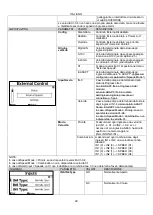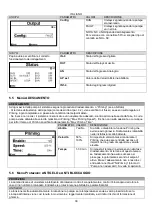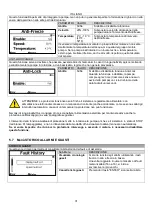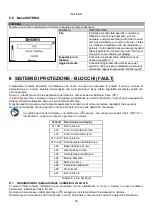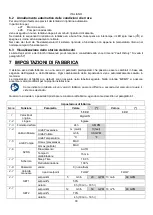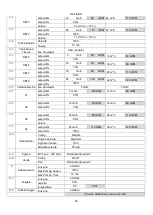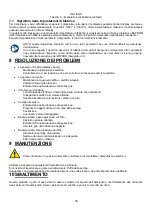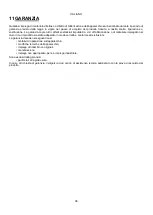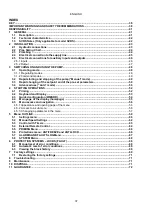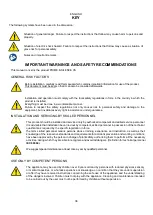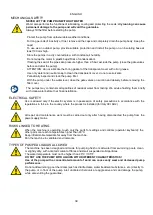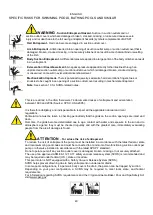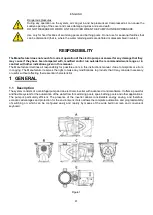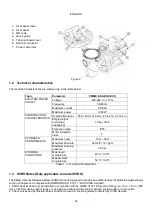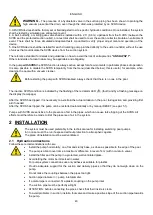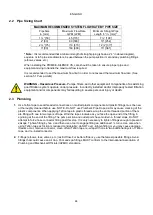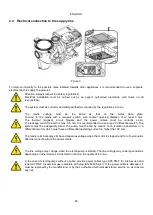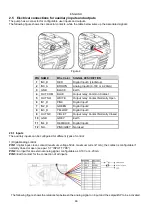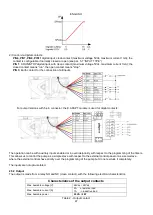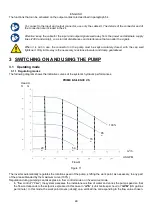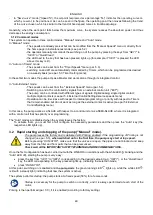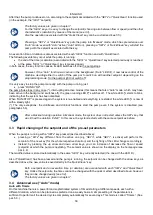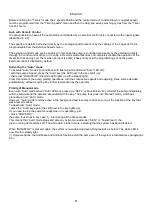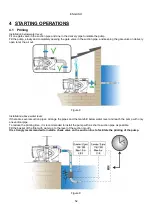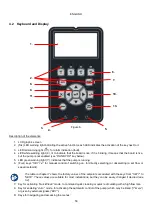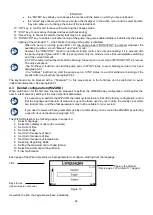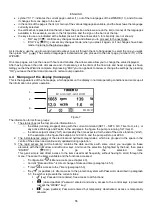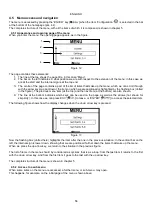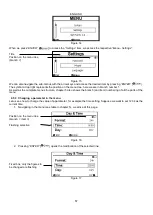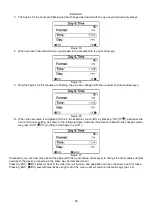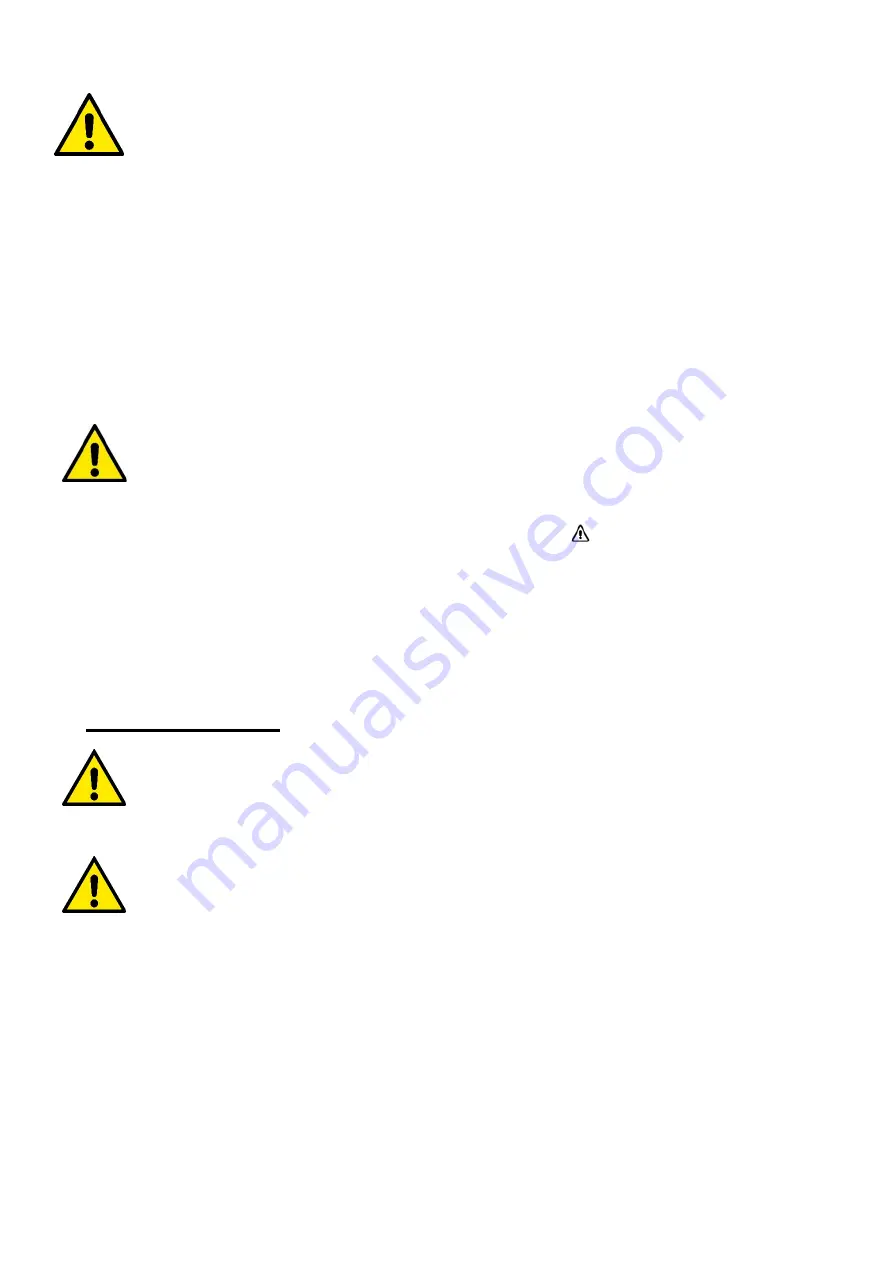
ENGLISH
43
WARNING
– The presence of a hydrostatic valve in the suction piping has been shown to prolong the
high vacuum present at the drain, even though the drain was protected by an SVRS device.
3. All SVRS devices shall be factory set or field adjusted to site -specific hydraulic conditions. Once installed, the system
shall be tested by simulating an entrapment event.
4. A ball, butterfly, or sliding gate valve shall be installed within 2 ft. (0.6 m) upstream from the S VRS (between the
SVRS and the protected suction outlet), or a test mat shall be used to cover the suction outlet to simulate an entrapment
event. There shall be three simulated entrapment tests conducted to verify proper adjust ment and operation of the
device.
5. One SVRS device shall be installed for each circulating pump plumbed directly to the suction outlet(s) without the use
of valves that could isolate the SVRS device from the suction system.
The reference standard for details and guidelines on how to avoid the risk of entrapment is
“ANSI/APSP 7”.
Other standards of a local nature may be applicable and obligatory.
In the pump
with
SVRS
,the SVRS function is always active, except for a few moments in particular phases of operation.
It is also possible to disable the SVRS temporarily from the menu (described below); this is useful, for example, when
cleaning the pool with a vacuum cleaner.
Before starting the pump with SVRS disabled, always check that there is no one in the pool.
The inactive SVRS condition is indicated by the flashing of the red alarm LED ( ) (fault) and by a flashing message on
the display (homepage).
After the SVRS has tripped, it is necessary to ascertain the actual situation in the pool, taking action and providing first
aid if needed.
After the SVRS has tripped, the pump can be restarted automatically or by manual RESET (see par. 5.1).
Pumps with SVRS are sensitive to the presence of air in the pipes, which can cause false tripping of the SVRS. All
efforts must therefore be made to limit the presence of air in the system.
2 INSTALLATION
The system must be used preferably in the technical area for installing swimming pool pumps.
In no case must it be run if exposed without protection to atmospheric agents.
The place of installation must be well ventilated.
2.1 Hydraulic connections
Follow these recommendations with care:
•
Install the pump horizontally, on a flat and sturdy base, as close as possible to the edge of the pool.
•
The pump is able to overcome a maximum difference in level of 4 m (with non-return valve).
•
Install the filter and the pump in a protected, well ventilated place.
•
Avoid letting the motor be immersed in water.
For pump-system connections use only adhesives suitable for plastics.
•
Provide adequate support for the suction and delivery pipes so that they do not weigh down on the
pump.
•
Do not make the couplings between the pipes too tight.
•
Suction pipe diameter > = pump inlet diameter.
•
If a metal pipe is connected, fit a plastic coupling on the pump inlet.
•
The suction pipe must be perfectly airtight.
•
ATTENTION: before connecting the pipes, check that their inside is clean.
•
To avoid problems in suction, install a foot valve and make a positive slope of the suction pipe towards
the pump.

